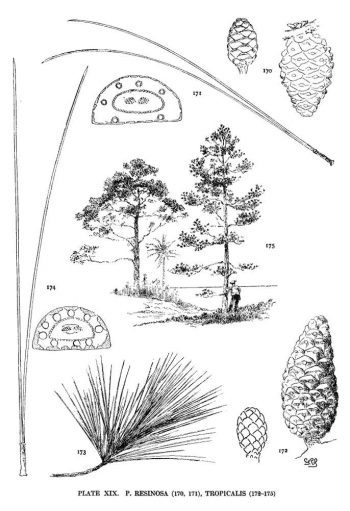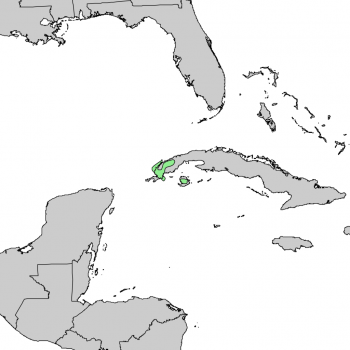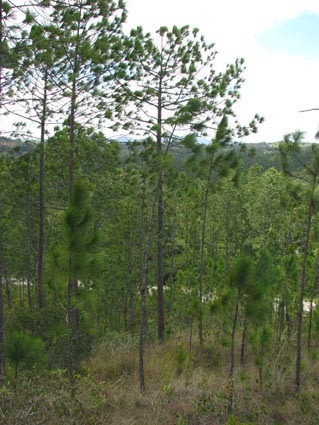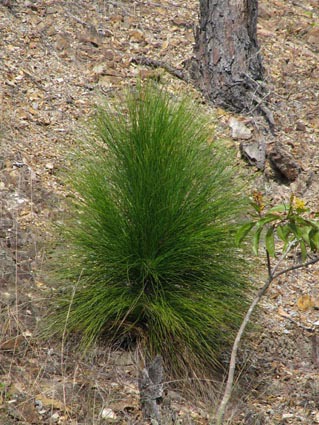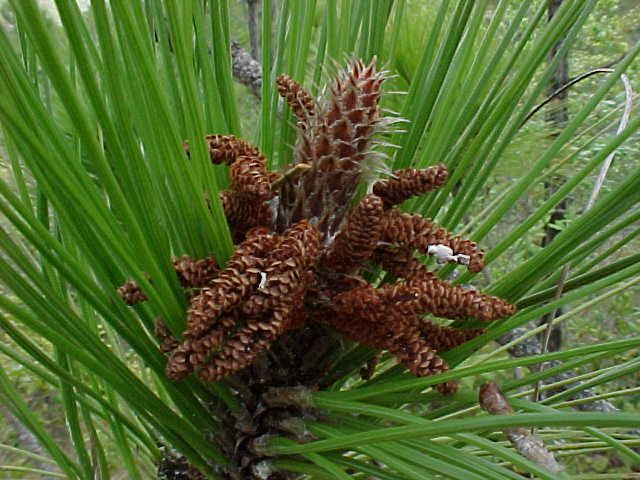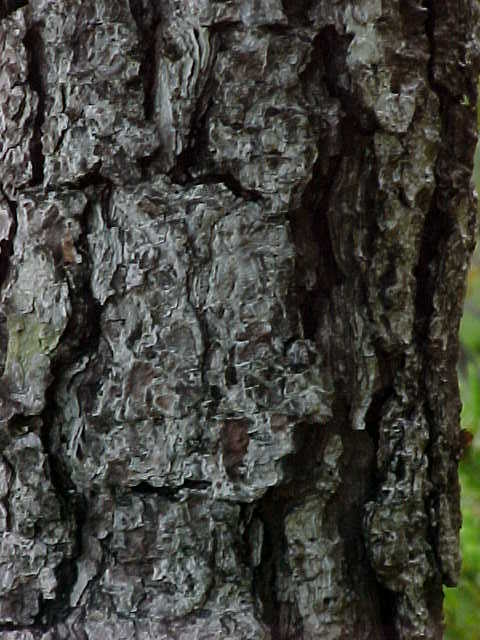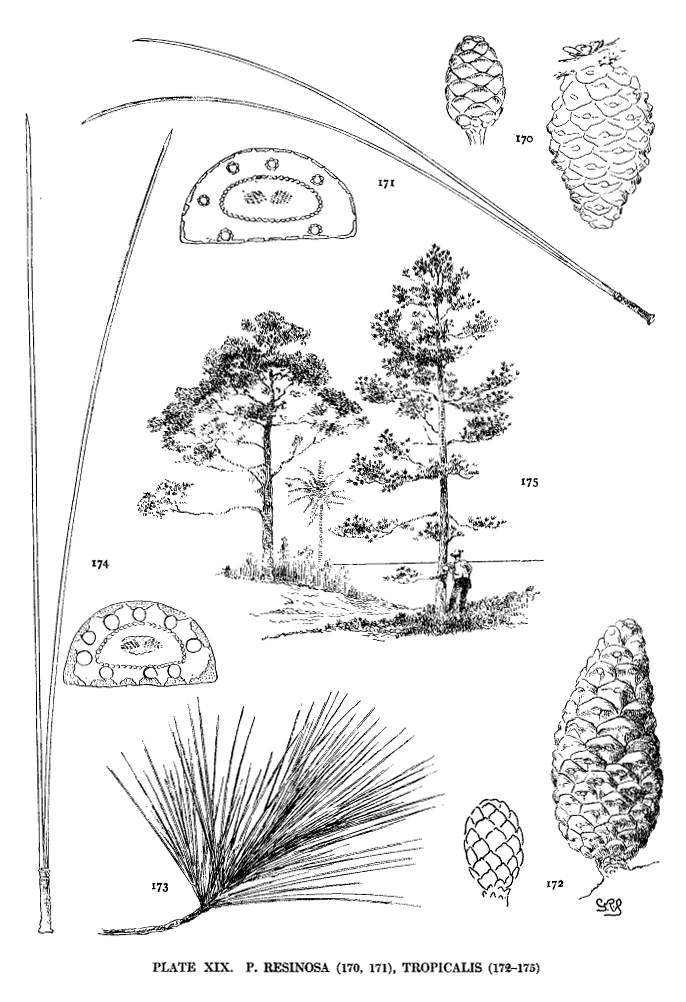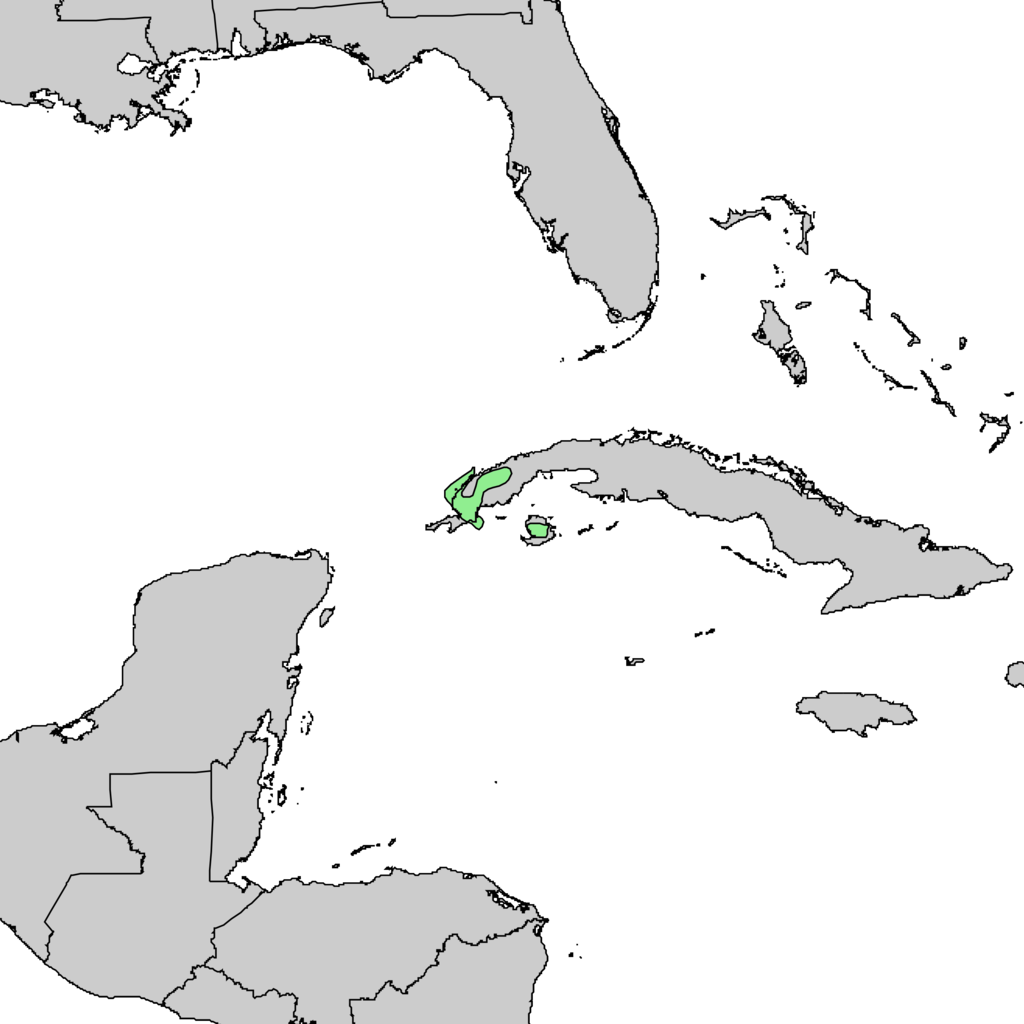subgenus Pinus, section, Pinus, subsection Pinus. This is one of the 'œclassic' old-world, 2-needled, hard pines.
Pinus tropicalis, as described in 1951 by Pierre Marie Arthur Morelet (1809 - 1892), in Revue Horticole de la Cote-D'Or, is commonly known as tropical pine, or Cuban red pine; as well as pino blanco, or pino hembra in the Spanish language. It is one of few pines to live in the tropics, hence the species name.
Ethnobotany. The wood of this species is is dense, resinous, and durable. It is an important regional source of timber. It is used in plantation forestry, mainly in Cuba, but also in other countries.
Description. Tropical pine is an evergreen, coniferous species of tree that grows to mature heights of 100 feet (30 m); with a slender, round trunk up to 72 inches (180 cm) in diameter, measured at breast height; and an open irregular crown with a depth of 25% to 33%.
- Branches are thick, spreading to ascending.
- Bark on young trees and branches is scaly and flaking, colored red-brown weathering to grey; with age becoming thick, rough, and scaly; breaking into irregular polygonal plates divided by deep longitudinal fissures.
- Shoots produce one node per year. They are thick and rough with large, persistent, decurrent pulvini, that are orange-brown in color in their 1st and 2nd years, then gray and scaly with flat bases of pulvini.
- Fascicle sheaths initially measure 0.8 inch (20 mm) long, colored papery yellow-brown with whitish margins, and are persistent, but weather to only about 0.4 inch (10 mm) long on older fascicles.
- Leaves (needles) are borne in fascicles of 2 (rarely 3), growing straight and rigid. Individual needles are light or yellow-green in color, measuring 8 to 12 inches (20 - 30 cm) long by 0.06 inch (1.5 mm) thick, with serrulate margins, and acute apices; persisting 2 years on the tree. Lines of stomata appear in 6 to 8 lines on all sides of needles.
- Pollen cones are borne crowded near the basal end of shoots, shaped oblong to cylindrical, measuring 0.8 to 1.2 inch (20 - 30 mm) long by 0.2 inch (5 mm) wide, colored pink when young, turning yellow when mature, finally turning brown when spent.
- Seed cones are borne subterminally, growing erect on short, thick peduncles; growing solitary, in pairs or whorls of up to 6. Immature cones narrowly ovoid, measuring 0.4 inch (10 mm) long by 0.2 to 0.28 inch (5 - 7 mm) wide, colored purple-red, maturing in two seasons. Mature cones are ovoid shaped with a flattened base, then 2 to 3.2 inches (5 - 8 cm) long by 1.6 to 2.2 inches (4 - 5.5 cm) when open, persisting several years on the tree before eventually falling with the peduncle attached.
- Seed scales number 100 to 120 per cone, developing straight or strongly recurved, and dark brown in color. Apophyses are flat or slightly raised, and up to 0.48 inch (12 mm) wide. Umbos are oriented dorsally, developing flat or slightly raised, with a rhombic outline, measuring circa 0.12 inch (3 mm) wide, without a prickle, and grayish brown to gray in color.
- Seeds are obliquely ovoid, slightly flattened, measuring 0.2 (5) by 0.16 inch (4 mm), colored light gray-brown. Seed wings are articulate, held to the seed by two claws. They have an obovate-oblong shape, colored yellow with a gray or black tinge, measuring 0.48 to 0.6 inch (12 - 15 mm) long by 0.2 to 0.24 inch (5 - 6 mm) wide.
- Seedlings possess suppressed terminal growth developing a thick radicle producing a "grass stage" for the first several years.
Distribution. This species is native to western Cuba - Pinar del Rio and the Isla de la Juventud, on coastal plains and in foothills at elevations of sea level to 1,000 feet (300 m). It is found on very well-drained, nutrient-poor sandy or gravelly alluvial soils. The climate is tropical, with annual precipitation of ca. 48 inches (1,200 mm) and a prolonged dry season. The vegetation type, pine savanna, consists of frequently burned grass-dominated lowland areas. It commonly co-occurs with P. caribaea var. caribaea (which also grows at higher elevations), but seems to be somewhat better adapted to frequent fires. Like many other fire pines (e.g. P. palustris), it has a "grass stage" which enables older seedlings and young saplings to survive frequent low-intensity ground fires.
Hardy to USDA Zone 10 - cold hardiness limit between 30° and 40°F (-1° and +4.4°C).
